Introduction
For small businesses, social media has grown to be an essential component of marketing.
It provides an opportunity to reach a large audience at a low cost, build relationships with customers, and increase brand visibility.
However, it can be overwhelming to create a social media marketing plan that is effective and efficient.
In this blog post, we will discuss how to create a killer social media marketing plan for your small business.
What is social media marketing?

In order to accomplish commercial objectives, social media marketing comprises producing and disseminating content on social media platforms.
The primary objective of social media marketing is to engage with customers, build brand awareness, and increase website traffic, leads, and sales.
Social media platforms such as Facebook, Twitter, Instagram, LinkedIn, and YouTube offer businesses the opportunity to connect with their target audience, share valuable content, and build relationships.
By creating a solid social media marketing strategy, businesses can leverage the power of social media to achieve their marketing goals and grow their business.
Why do you need a social media marketing plan for a small business?
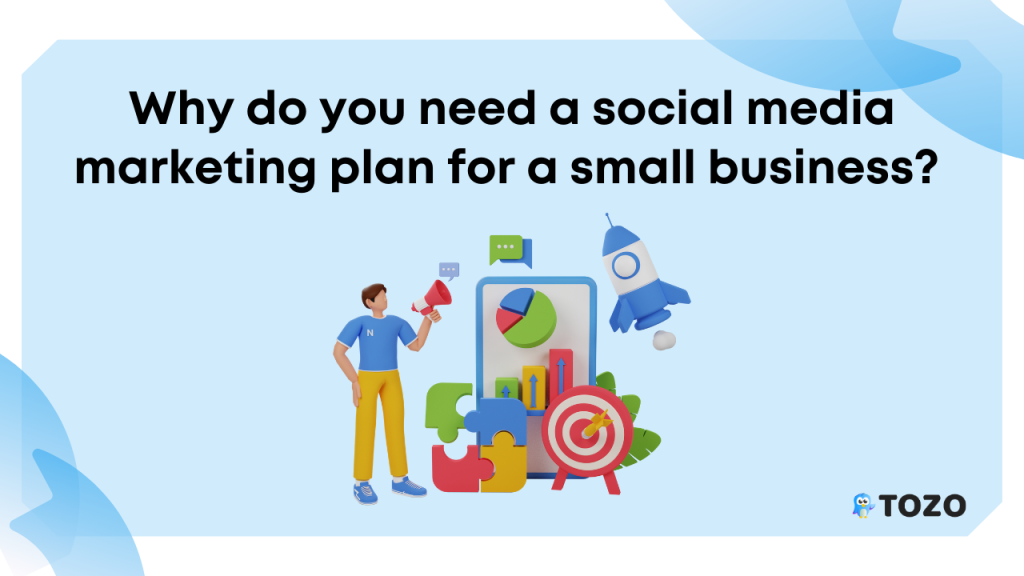
A social media marketing plan is crucial for small businesses to achieve their marketing goals, save time and resources, build brand awareness, strengthen customer relationships, and stay ahead of the competition.
By having a plan in place, small businesses can establish clear objectives and create targeted content to measure progress towards achieving their goals.
A cohesive social media strategy also helps small businesses to engage with their customers, increase their visibility online, and adapt to changes in the market.
Overall, a social media marketing plan is essential for small businesses to effectively leverage the power of social media and grow their business.
14 Tips to create a social media marketing plan for your small business
1. Define Your Target Audience:
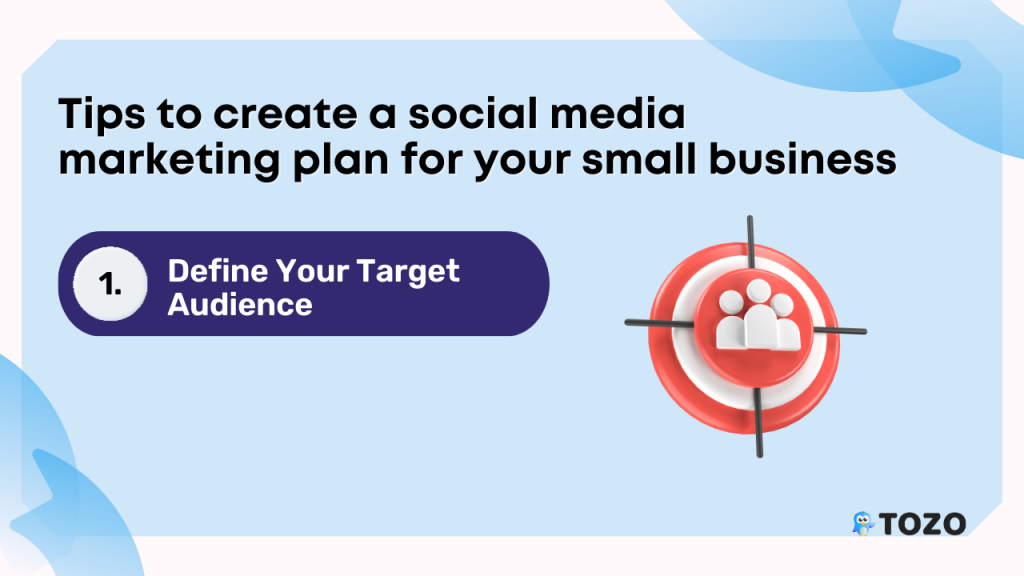
To define your target audience, you need to understand their demographics, psychographics, and behavior.
You can use tools like Google Analytics, Facebook Insights, or Twitter Analytics to gain insights into your audience.
Once you have this knowledge, you can use it to develop buyer personas for your ideal clients.
These personas can help you create content that resonates with your audience and addresses their needs.
2. Choose the Right Social Media Platforms:
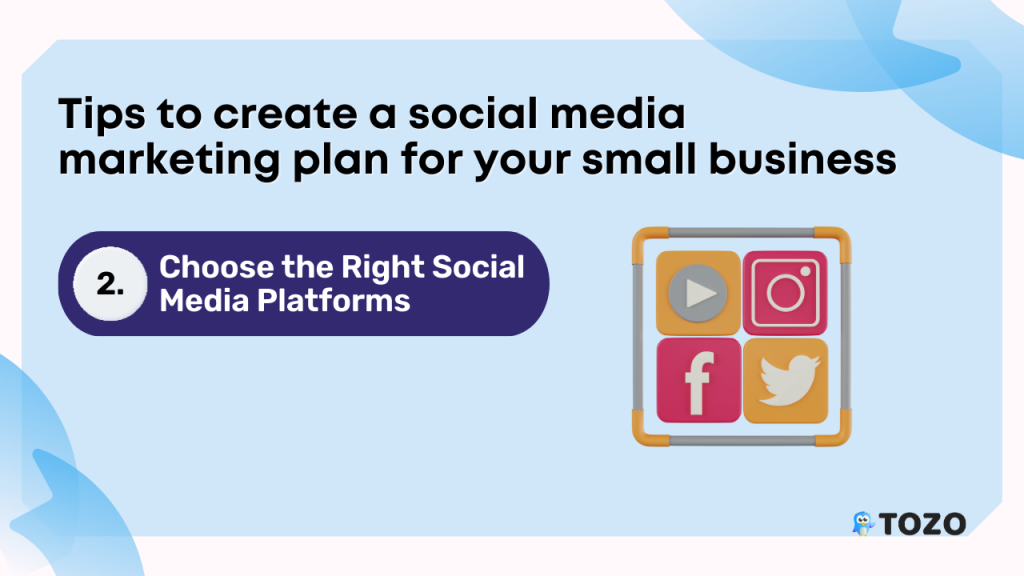
To choose the right social media platforms, you need to understand the unique features and demographics of each platform.
For example, Facebook is suitable for all types of businesses and has a broad audience, while Instagram is ideal for businesses with visual content like photography, fashion, or food.
LinkedIn is suitable for B2B businesses that want to connect with professionals
Understanding the strengths and weaknesses of each platform will help you choose the right one for your business.
3. Set Goals and Objectives:
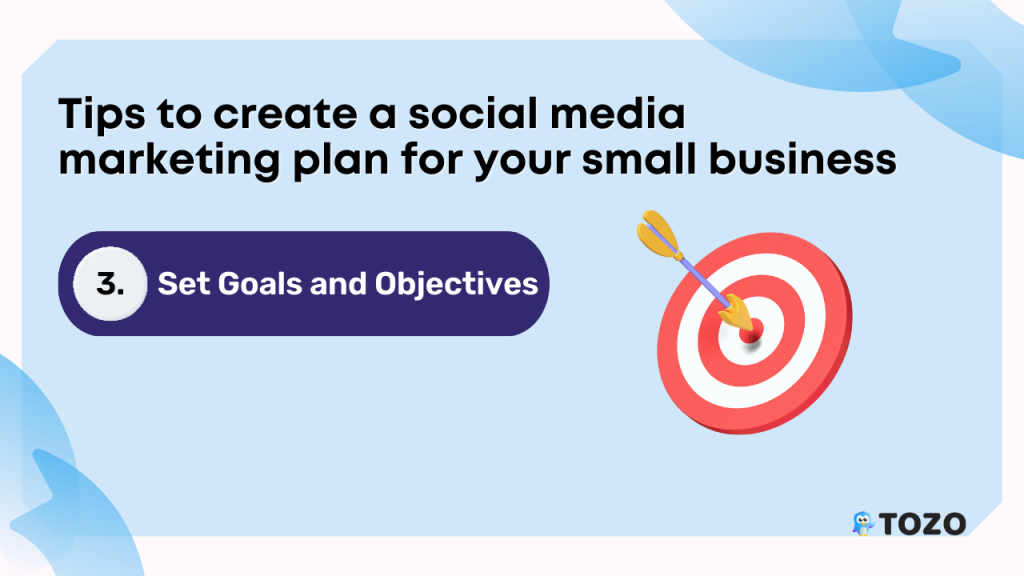
Setting clear and specific goals and objectives is a critical step in creating a successful social media marketing plan.
Your goals and objectives should align with your overall business objectives and be SMART (Specific, Measurable, Achievable, Relevant, and Time-bound).
Conduct a social media audit to determine where you currently stand, and use this information to set realistic and achievable goals.
By setting clear goals and objectives, you can measure your progress and adjust your strategy as necessary to achieve your desired outcomes.
4. Create Compelling Content:
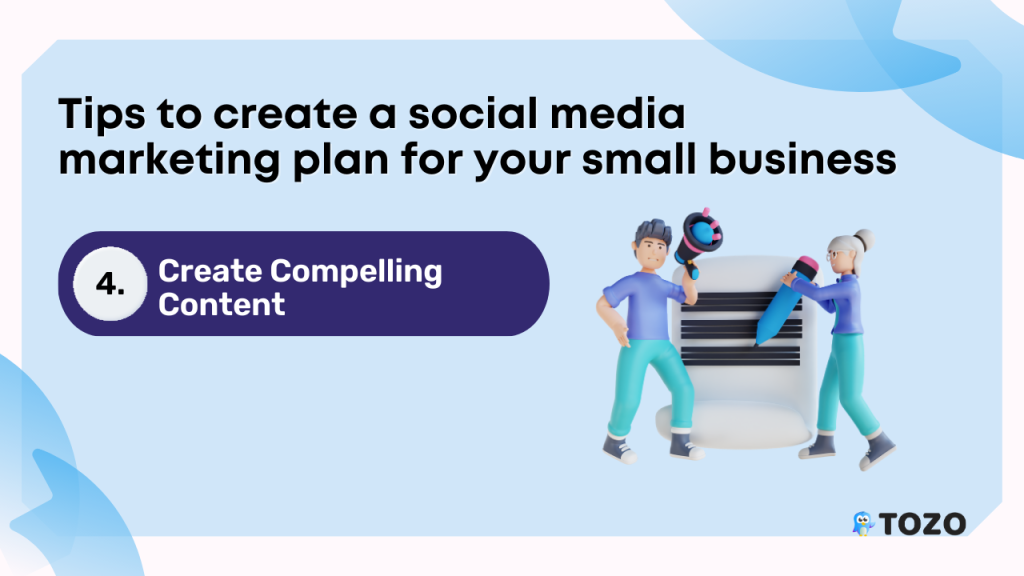
Creating compelling content is not just about promoting your products or services; it is about providing value to your audience.
You can create how-to guides, industry news, behind-the-scenes stories, and customer success stories to engage your audience.
To make your material more interesting and shared, use visual elements like photos and videos.
5. Develop a Content Calendar:
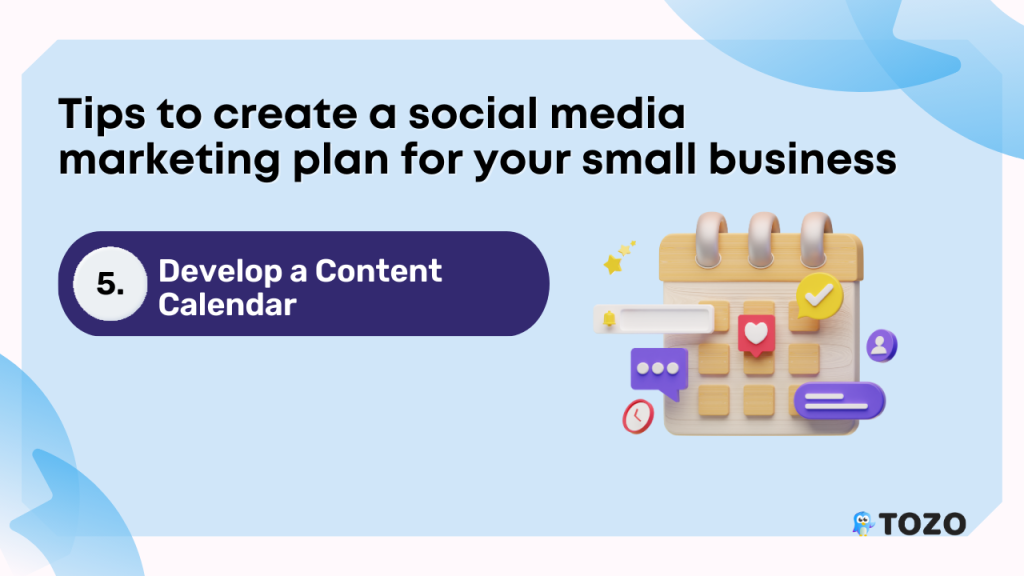
A content calendar is a schedule of the content you plan to post on your social media platforms.
It helps you stay organized and consistent with your posting schedule.
Your content calendar should include the type of content, the date and time of posting, and the social media platform you plan to post on.
It should also consider important events, holidays, and promotions that align with your business objectives.
6. Engage with Your Audience:
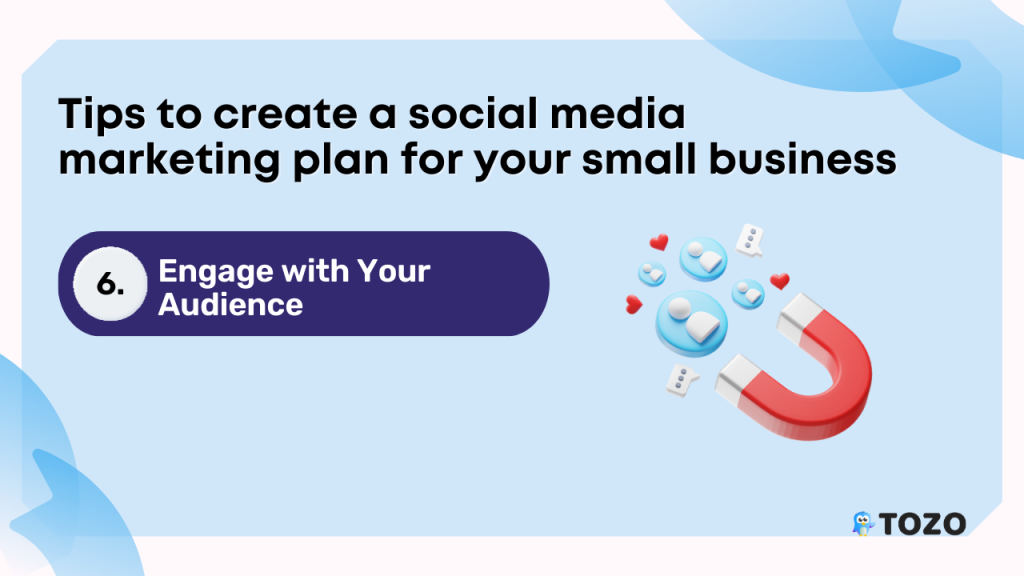
Building relationships with your clients requires engagement.
You can engage with your audience by responding to comments, answering questions, and sharing their content.
You can also start conversations with your audience by asking for their opinions, feedback, or ideas.
Building a community around your brand is an effective way to create a loyal following.
Engaging with your audience on social media is essential to building a strong brand presence and driving sales.
With Tozo.social, you can streamline your social media management and engage with your audience more effectively.
7. Analyze Your Results:
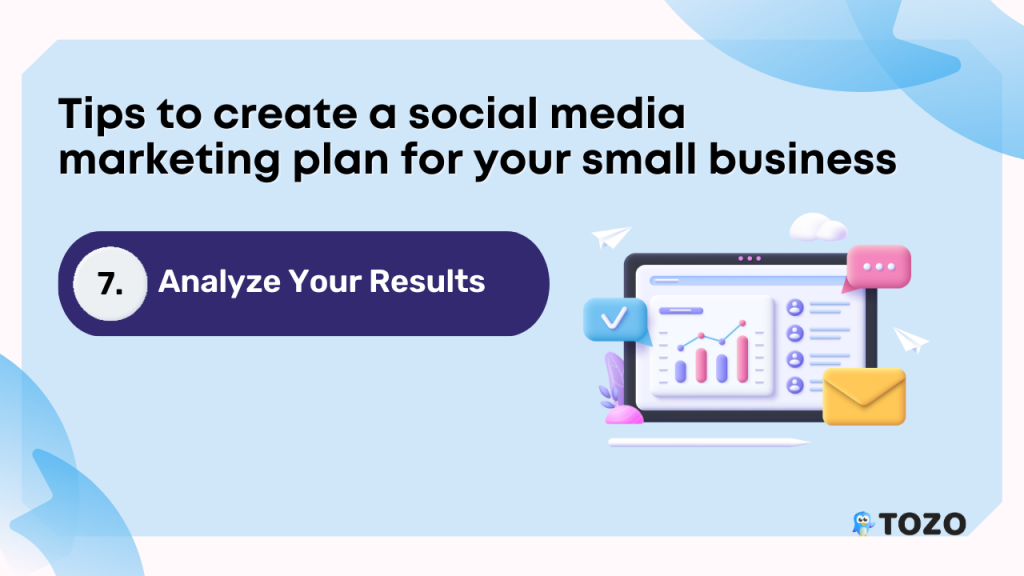
Analyzing your results is essential to determine the success of your social media marketing plan.
You can use social media analytics tools to track your progress and measure the success of your campaigns.
Analyzing your results will help you identify what works and what doesn’t, so you can make data-driven decisions about your strategy.
8. Utilize Paid Advertising:
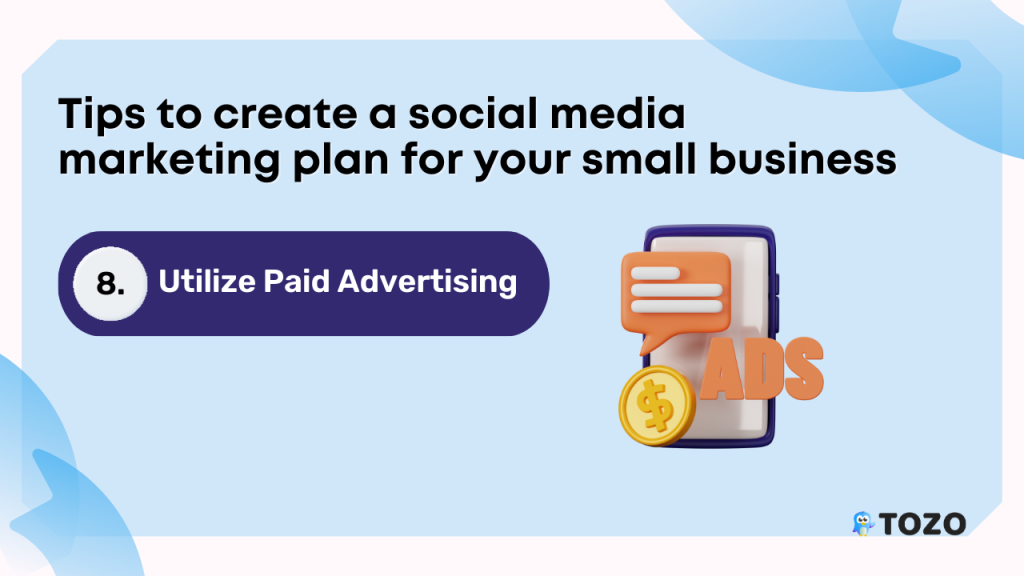
While organic reach is essential, it can be limited. Utilizing paid advertising can help increase your reach and target specific audiences.
Facebook, Instagram, and LinkedIn all offer paid advertising options that allow you to create targeted ads based on demographics, interests, behaviors, and more.
Paid advertising can also help you achieve your specific business goals, such as increasing website traffic, generating leads, or driving sales.
9. Leverage Influencers:
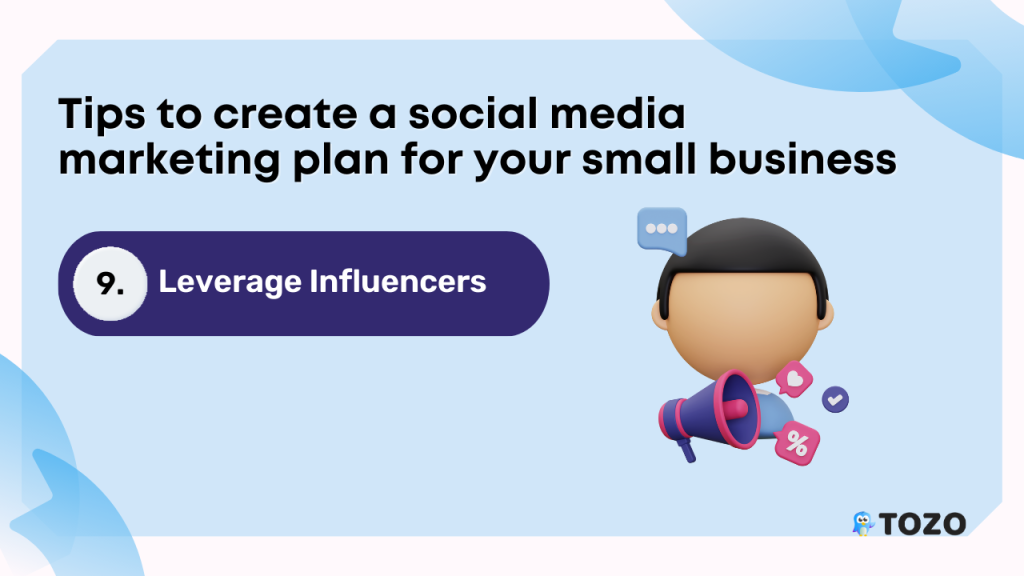
Using influencer marketing, you may effectively use social media to connect with your target audience.
You may enhance brand recognition by collaborating with influencers and taking advantage of their engaged and devoted fan base.
When choosing influencers, make sure their values align with your brand and that their audience matches your target audience.
You can compensate influencers through monetary payment, free products or services, or a commission-based model.
10. Monitor Your Competitors:
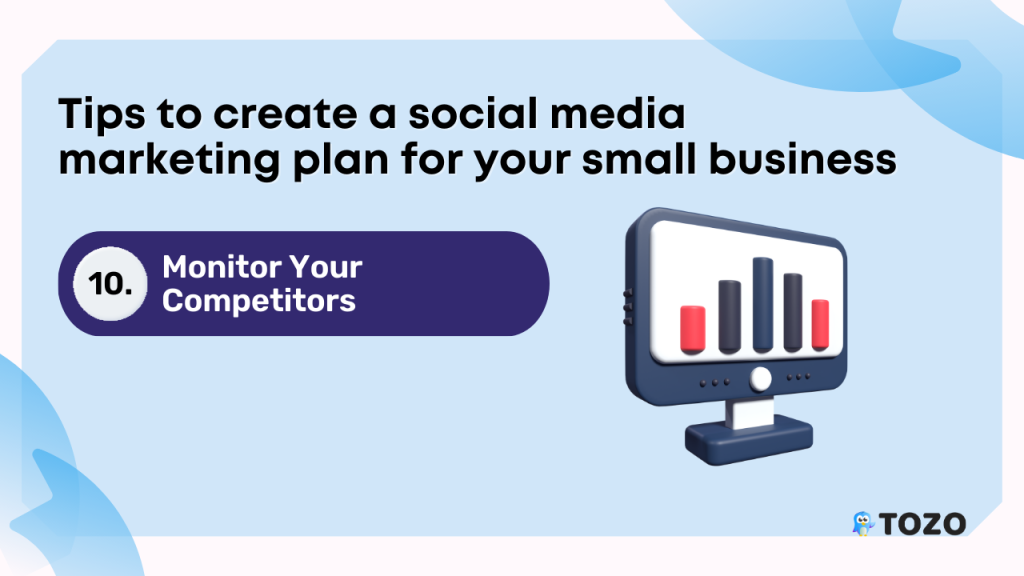
Monitoring your competitors can give you valuable insights into what’s working in your industry and what your target audience is interested in.
You can use tools like Hootsuite, Sprout Social, or Buzzsumo to monitor your competitors’ social media activity, engagement rates, and content strategies.
This information can help you refine your social media marketing plan and stay ahead of your competition.
11. Experiment with Different Types of Content:
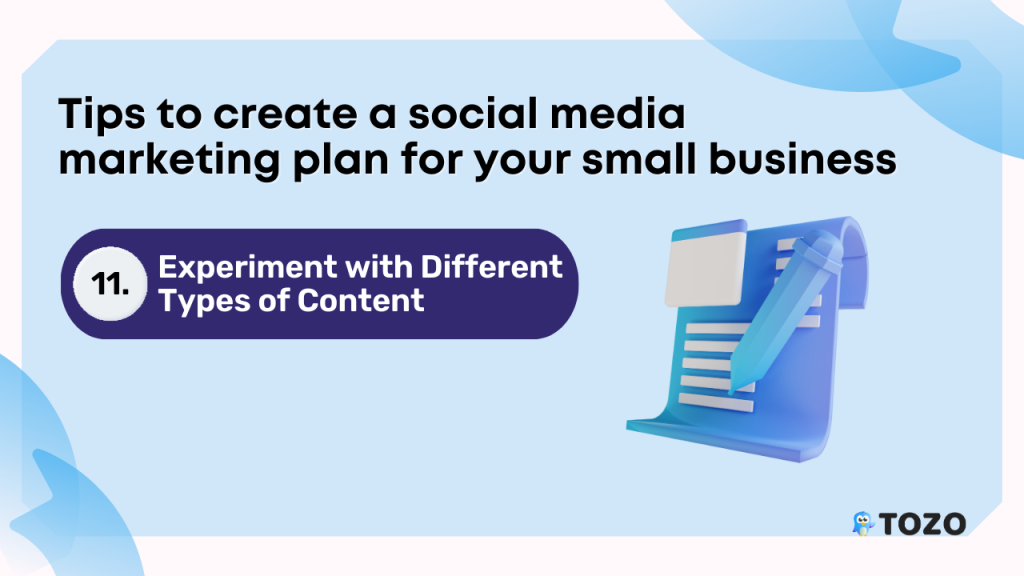
Social media is constantly evolving, and different types of content may perform better on certain platforms.
Try out several content kinds to determine what resonates with your audience, including videos, live broadcasts, tales, and polls.
You can also repurpose content across different platforms to maximize its reach and engagement.
12. Optimize Your Profiles:
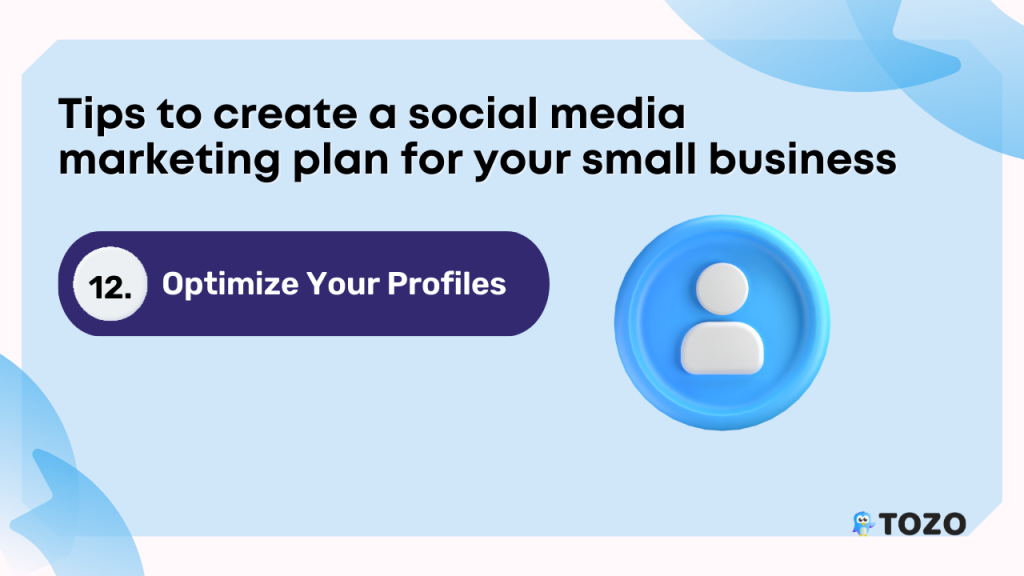
Customers frequently form their first opinions of your company through your social media sites.
Optimize your profiles by including high-quality images, consistent branding, and clear descriptions of your business.
Use keywords relevant to your industry and business to improve your search rankings and make it easier for customers to find you.
Make sure your profiles are complete and up-to-date to build trust and credibility with your
13. Engage with Industry Thought Leaders:
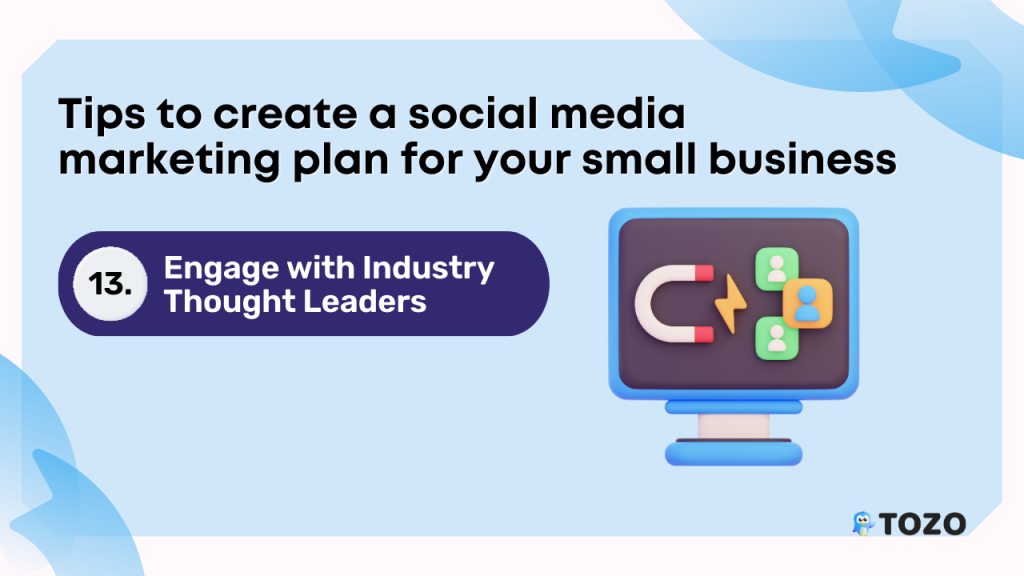
Engaging with industry thought leaders can help you build credibility and authority in your industry.
Follow influencers, industry experts, and leaders in your field, and engage with their content by commenting and sharing their posts.
By building relationships with thought leaders, you can increase your reach and visibility on social media.
14. Implement A/B Testing:

A/B testing involves creating two different versions of your content and testing them against each other to see which performs better.
You can test different elements, such as headlines, images, and call-to-actions, to see which resonates best with your audience.
A/B testing can help you optimize your social media campaigns and improve your overall performance.
Conclusion
Creating a killer social media marketing plan is essential for small businesses to effectively leverage the power of social media and achieve their marketing goals.
A solid social media plan can help businesses establish clear objectives, save time and resources, build brand awareness, strengthen customer relationships, and stay ahead of the competition.
By following the steps outlined in this guide, small businesses can create a winning social media marketing plan that is tailored to their specific needs and target audience.



